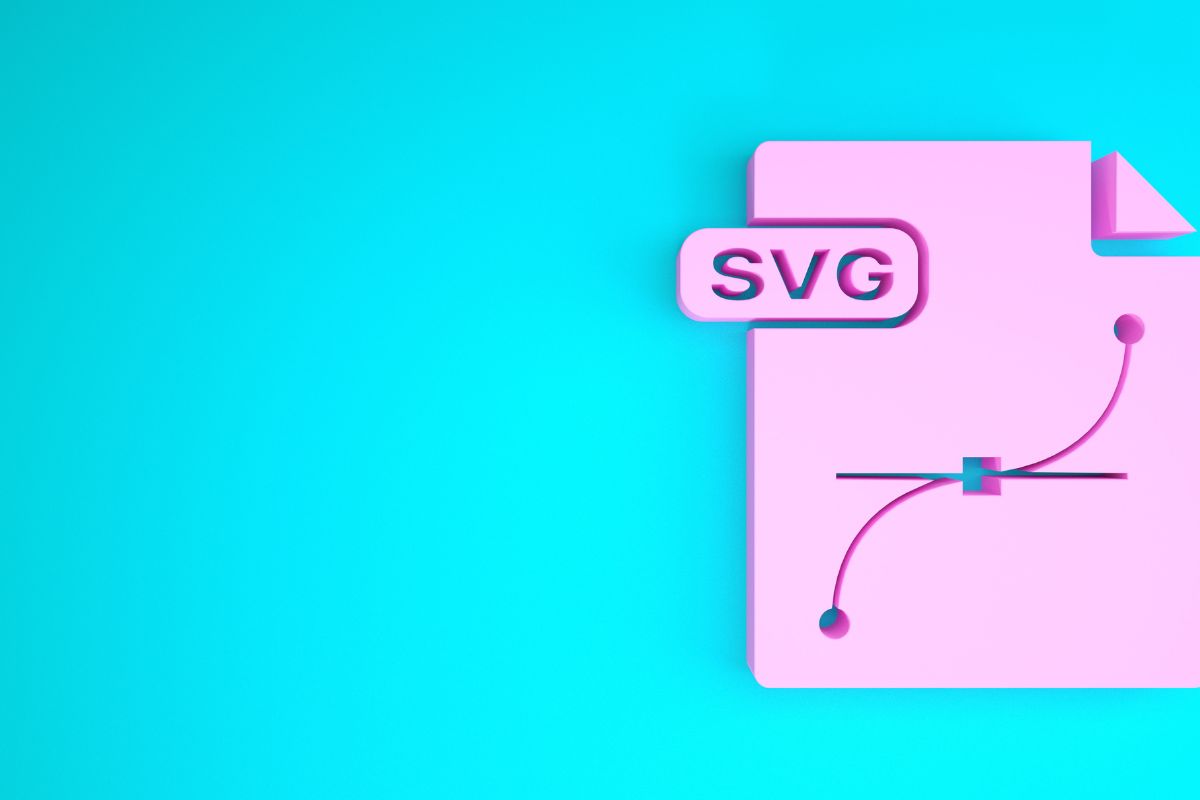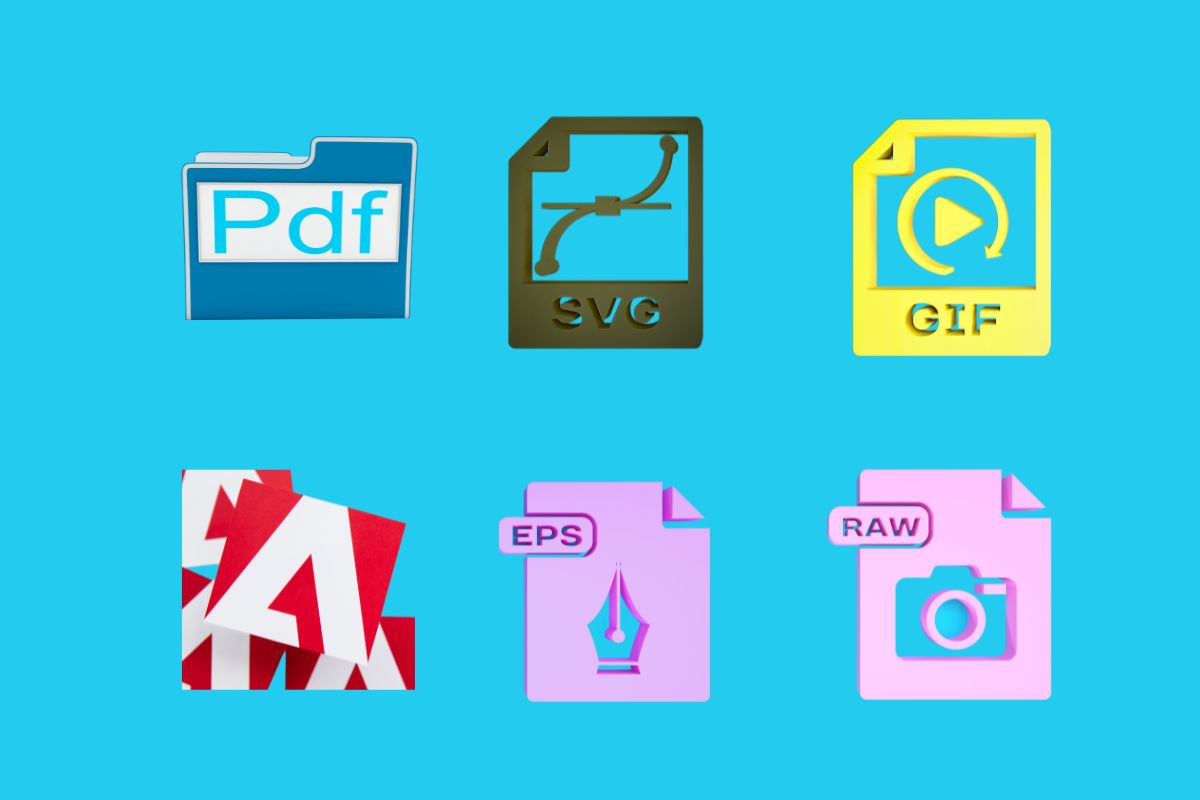Vector formats are digital file types that represent images using geometric constructs such as points, lines, curves, and shapes based on mathematical expressions. They differ fundamentally from raster formats, which represent images as a grid of pixels, each with a fixed color value. The scalability of vector images without loss of resolution is one of their key advantages over raster graphics. This characteristic makes vector formats preferable for designs that require resizing, such as logos, typography, and graphic prints.
In your experience with digital graphics, you may notice that vector images maintain their clarity and detail at any scale, unlike raster images, which can become pixelated or blurry when enlarged. This is because vectors are resolution-independent, while raster images are tied to the specific number of pixels that comprise them. Common vector formats include SVG (Scalable Vector Graphics), AI (Adobe Illustrator), and EPS (Encapsulated PostScript). Each of these formats is designed to store complex graphic information in a way that can be easily manipulated and displayed on various devices and platforms.
Basics of Vector Formats
Vector formats revolve around creating graphics that are scalable and precise. These formats leverage mathematical formulas to define lines, curves, and points that compose an image, providing clarity at any size.
Definition and Principles of Vector Graphics
Vector graphics are created using mathematical formulas that establish a series of points interconnected by lines and curves. These formulas ensure that the graphics are scalable, meaning they can be enlarged or reduced without losing quality. Unlike raster graphics that depend on pixels, vector images remain crisp and clear at any resolution.
Vector vs. Raster Graphics
Understanding the difference between vector and raster graphics is crucial. Vector graphics, as mentioned, use mathematical calculations to represent images, making them resolution-independent. Raster graphics, also known as bitmap images, are made up of pixels—a grid of individual colored squares. Common raster file formats include .png, .jpg, .jpeg, and .gif. These formats depend on resolution and can lose clarity when scaled beyond their original size, often becoming pixelated.
Common Vector File Extensions
There are several file extensions associated with vector graphics:
- .SVG (Scalable Vector Graphics): This format is often used on the web and supports interactivity and animation.
- .AI (Adobe Illustrator): A proprietary file format developed by Adobe Systems for Illustrator, a vector graphics editor.
- .EPS (Encapsulated PostScript): An older format used for a broad range of graphics applications.
- .PDF (Portable Document Format): While known for documents, PDFs can also contain vector graphics.
- .DXF (Drawing Exchange Format): Used in computer-aided design (CAD) software for 2D and 3D drawings.
These extensions signify files that can be scaled infinitely without loss of quality, thanks to their vectorial base structure.
Technical Aspects of Vector Formats

Vector formats are fundamentally different from bitmaps. They provide a way to store graphical information as mathematical descriptions, ensuring that your images remain crisp and clear at any magnification.
Mathematical Basis of Vectors
Vectors describe images using mathematical curves and shapes defined by points, lines, and formulas. These descriptions allow vectors to rescale without losing quality, as they’re not limited to a fixed number of pixels like a bitmap image. For instance, formats like SVG (.svg) and Adobe Illustrator (.ai) employ these mathematical principles, making them infinitely scalable and resolution-independent.
File Format Specifications
Vector file formats such as SVG, AI (Adobe Illustrator), and EPS (Encapsulated Postscript) are built upon XML specifications which define how the shapes and paths are generated. These file types come with different levels of compatibility and are used for specific types of projects, like PDF (Portable Document Format) for documents, or EPS for high-resolution graphics.
Scalability and Resolution Independence
Images stored in vector file formats can be enlarged to virtually any size without degrading quality, making them ideal for a variety of display mediums. Scalability is the core advantage of vector graphics, and it’s achieved without the file size increases you’d expect with bitmap images. For web graphics, especially, SVG files offer excellent scalability and resolution independence without the loss in quality, even on retina displays.
Working with Vector Files
Vector formats are essential in graphic design, providing scalability and editing flexibility. They’re ideal for creating illustrations, logos, and business cards that require precise, scalable graphics.
Creating and Editing Vectors
You can create and edit vector files using software like Adobe Illustrator, CorelDraw, and Inkscape. Such programs enable you to craft detailed illustrations and logos with a professional touch. Adobe Illustrator, for instance, commonly uses the .ai format, while Scalable Vector Graphic (.svg) files are widely adopted for their web compatibility. When designing, you manipulate paths and shapes which can be scaled indefinitely without loss of quality.
Conversion between Vector and Raster
Converting between vector formats, like AI (Adobe Illustrator) or EPS, and raster formats, such as JPEG files or PNG, is common when a project moves from design to online or print publication. Conversion tools in design software let you change vector files to raster images, preserving transparency and scalability where possible. However, you’ll encounter differences in file size and quality as vector’s small file size and scalability advantages are typically not preserved in raster formats.
Optimization for Web and Print
Vectors are the go-to for crisp print media due to their scalability. When preparing vectors for printing, consider converting them to PDF files, which printers accept universally. For web use, formats like SVG are preferable for their small file size and compatibility across web browsers. Optimizing vectors for web often involves minimizing the file size further without compromising the image quality, ensuring quick loading times and a smooth user experience online.
Use Cases and Applications

Vector formats are essential in various fields where precision and scalability are prized. They’re pivotal in graphic design, digital art, and technical imaging because they maintain clarity at any size or resolution.
Graphic Design and Branding
In graphic design and branding, vector formats are your go-to for creating and managing logos and business cards due to their scalability and quality. Logos benefit greatly from vector graphics, allowing them to be resized and manipulated without loss of detail. Graphic design software often favors vectors for their crisp lines and the ability to adjust typography and icons seamlessly. In your branding efforts, vector images can be easily updated, ensuring that your company’s visual identity remains consistent across various media.
Digital Illustrations and Art
Your digital illustrations and art depend on the precision and scalability of vector formats. They allow for intricate patterns and fractals that can be enlarged for a billboard or shrunken for a smartphone screen without compromising quality. As an artist, you might use vectors to create clean, editable illustrations that stand out for their vivid colors and clean edges.
Technical and Scientific Imaging
For technical and scientific imaging, vector formats offer advantages in creating clear, detailed representations of complex subjects. Whether it’s for a detailed medical illustration or a scientific diagram, vectors ensure that every line and curve is maintained, no matter the scale. This is particularly important in photography where clarity and precision are paramount, especially for images that may be used in a variety of formats and sizes.
Advanced Vector Format Features

Advanced vector formats, particularly Scalable Vector Graphics (SVG), offer a range of features that enhance the visual and interactive capabilities on the web and other digital mediums. These includedynamic animation options, scripting for automatization, and seamless integration with different media types, all while maintaining high-quality visuals.
Interactivity and Animation in SVGs
SVG is a powerful format that supports both interactivity and animation. This means you can create graphics that respond to user actions, such as mouse clicks or hovers, enhancing user engagement on websites. Moreover, SVG enables complex animations, where elements can move, change shapes, or transform in color. Utilizing SVG’s XML-based structure, animations can be defined and controlled with precision.
Scripting and Automation
Scripting capabilities are integral to SVG, allowing for complex and responsive features to be scripted with languages like JavaScript. This enriches web experiences by automating interactions or dynamic content updates without needing to reload the page. Your web browser can execute these scripts directly, making SVG an adaptable tool for creating interactive web content.
Integration with Other Media Types
SVGs easily integrate with various other media types, including video and other multimedia elements, allowing for rich,multimedia experiences within a single vector graphic. They aresearchable and indexable, as text within SVGs can be read by search engines, improving SEO for websites. SVG also scales seamlessly for other uses, such as electronic billboards, without loss of quality, making it a versatile choice for both small-scale web graphics and large-format advertising displays.
Optimizing Vector File Usage
Optimizing your use of vector file formats can lead to significant improvements in file size, web performance, and compatibility across different platforms.
File Size and Compression
File size is a critical factor to consider when working with vector files. Smaller file sizes load faster, which is vital for web usage. You can achieve compression without sacrificing quality by choosing appropriate formats like SVG for web graphics or PDF for documents. PostScript and EPS files tend to be larger, but can still be compressed. Formats like WMF are less common and may not compress as effectively.
- Optimize: Ensure vectors are as simple as possible.
- Compress: Use tools that remove unnecessary metadata.
- Choose: Select the right file type for your needs—SVG for web, PDF for multi-page documents.
Accessibility and Web Standards
For web standards and accessibility, SVG stands out due to its text-based nature, which can be indexed by search engines and read by screen readers, enhancing your content’s accessibility. Adhering to web standards such as HTML5 specifications ensures your vector files are displayed consistently across all web browsers.
- Follow: HTML5 and W3C guidelines.
- Test: Use different web browsers to ensure compatibility.
- Implement: Make sure SVG files have descriptive titles and accessible text.
Cross-Platform Compatibility
Your vector graphics should maintain compatibility across different platforms and devices. SVG files are widely supported and provide scalability without loss of quality on both web and mobile displays. Formats like PDF maintain consistency across various operating systems. For imagery, consider WebP as it provides high-quality results with good compression.
- Verify: Check your vector files on multiple platforms and devices.
- Convert: Use tools to convert files into more compatible formats as needed.
- Update: Keep abreast of emerging standards for maximum cross-platform operability.
By mindfully managing file size through efficient compression, adhering to accessibility and web standards, and ensuring cross-platform compatibility, you’ll make the most of your vector graphics and enhance your user’s experience.
Frequently Asked Questions
Vector formats are essential for creating and manipulating graphics that need to scale without loss of quality. Understanding their varied applications and characteristics can help you choose the most suitable format for your project.
What purposes do vector formats serve in digital media?
Vector formats are used to produce graphics that are scalable and resolution-independent. This is particularly beneficial for logos, illustrations, and graphic designs which require resizing for different mediums without compromising on clarity.
Can PDF files support vector graphics?
Yes, PDF files can support vector graphics. They are often used for distributing documents on the web because they can contain precise, scalable vector images alongside text and raster graphics.
How are vector formats utilized in Adobe Photoshop?
Adobe Photoshop can utilize vector formats through its shape layers, path tools, and smart objects. These tools allow you to incorporate scalable vector shapes and effects into raster-based compositions, combining the strengths of both formats.
Which file format is best for storing vector graphics?
The SVG (Scalable Vector Graphics) format is widely regarded as the best for storing vector graphics due to its XML-based versatility, web compatibility, and scalability.
Are EPS files considered vector file formats?
EPS (Encapsulated PostScript) files are indeed considered vector file formats. They are a common choice for high resolution printing and can contain text as well as graphics that retain quality across various sizes.
What distinguishes a vector logo file from other graphic formats?
A vector logo file is created using paths or strokes with a mathematical formula, which distinguishes it from raster images that are made up of pixels. The vector format ensures that the logo can be scaled up to any size without losing quality, unlike pixel-based raster images.



